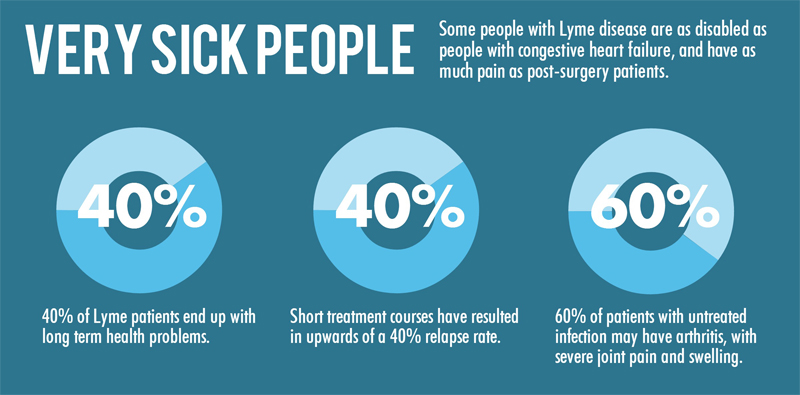Lyme disease is on the rise – learn these 10 vital prevention tips to keep yourself safe and healthy outdoors.
Table of Contents
Introduction to Lyme Disease
Understanding Lyme disease is essential to help prevent its spread and stay safe while enjoying the great outdoors. Lyme disease is a serious illness caused by a bacteria called Borrelia burgdorferi. This bacteria is transmitted to humans through the bite of an infected black-legged tick, also known as a deer tick.
What Is Lyme Disease?
Lyme disease is named after the town of Lyme in Connecticut, where it was first identified in 1975. It can affect various parts of the body, including the skin, joints, heart, and nervous system. Common symptoms of Lyme disease include fever, fatigue, headache, and a characteristic circular rash known as erythema migrans.
How Do People Get Lyme Disease?
People get Lyme disease when an infected tick bites them. Ticks are tiny arachnids that feed on the blood of animals, including humans. When an infected tick bites a person and stays attached for a period of time, it can transmit the bacteria that causes Lyme disease into the person’s bloodstream, leading to infection.
Understanding Ticks and Their Habitat
Ticks are small bugs that like to hide in grass, bushes, and trees. They have a special way of getting food by biting animals, including humans. Ticks can spread diseases, like Lyme disease, if they bite someone.
Where Ticks Hang Out
Ticks can be found in places where there is tall grass, leaves, and bushes. They like to live in wooded areas or fields where there are animals to feed on. This is why it’s essential to be careful when playing or hiking outside.
The Signs of Lyme Disease
Recognizing the signs of Lyme disease is crucial in getting the right treatment on time. Here’s how you can tell if someone has Lyme disease.

Image courtesy of danielcameronmd.com via Google Images
Early Lyme Disease Symptoms
When someone first gets Lyme disease, they might start feeling tired a lot and have a fever. They could also have a headache and feel achy, like when you have the flu. Sometimes, they might see a big red bump on their skin that looks like a target. If you or someone you know has these signs after being outdoors, it’s important to let a grown-up know so they can see a doctor.
Chronic Lyme Disease
Chronic Lyme disease is when someone has Lyme disease for a long time, even after getting treatment for it. The symptoms can come and go, like feeling tired all the time, having muscle pain, or headaches. If someone you know has these symptoms lasting for a while, they should see a doctor to get help.
Tips to Avoid Tick Bites
Tick bites can be prevented with some simple precautions. Here are a few tips to help you stay safe:
Cover Up!
One of the best ways to prevent tick bites is by wearing the right clothing. When you’re going to be spending time outdoors, make sure to wear long sleeves, long pants, and closed-toe shoes. Ticks can’t bite through clothing, so cover up to stay protected!
Stay on the Path
Sticking to clear paths and avoiding tall grass and dense woods can significantly reduce your risk of coming into contact with ticks. Ticks like to hang out in these areas, so it’s best to stay on the path where they’re less likely to be.
Use Bug Repellent
Applying bug repellent with DEET can help keep ticks away. Be sure to follow the instructions on the repellent’s label and ask an adult to help you apply it correctly. Bug repellent can provide an extra layer of protection against tick bites.
If you follow these tips, you can greatly reduce your chances of getting a tick bite and lower your risk of contracting Lyme disease. Stay safe and enjoy your time outdoors!
How to Check for Ticks
After spending time outdoors, it’s essential to check yourself for ticks to prevent Lyme disease. Ticks can hide in tricky spots on your body, so make sure to do a thorough check to stay safe.

Image courtesy of visual.ly via Google Images
Step-by-Step Tick Check
Here’s a simple guide to help you check for ticks:
1. Get Undressed: Take off your clothes and inspect every part of your body, including under your arms, around your ears, inside your belly button, behind your knees, between your legs, and around your waist.
2. Check Your Hair: Carefully go through your hair to look for any ticks that may have crawled up there.
3. Use a Mirror: If you have trouble seeing all parts of your body, ask an adult to help you use a mirror for a better view.
4. Examine Clothes and Gear: Don’t forget to check your clothes, backpack, and any other gear you wore while outside for any lingering ticks.
5. Take Your Time: It’s important to be patient and thorough during your tick check to ensure you don’t miss any pesky ticks.
By following these steps, you can make sure you stay tick-free and lower your risk of getting Lyme disease.
What to Do If You Find a Tick
Ticks are pesky little creatures that can cause big problems if they bite you. If you find a tick on your body, it’s important to know what to do to make sure you stay safe. Here are the steps to take when you discover a tick:
Tick Removal Steps
First things first, don’t panic! It’s crucial to stay calm when dealing with a tick. Grab a pair of fine-tipped tweezers and carefully grasp the tick as close to your skin’s surface as possible. Slowly and steadily pull upwards without twisting or jerking. You want to make sure you remove the whole tick, including its head.
After Removing a Tick
Once the tick is successfully removed, it’s time to clean the bite area with some warm soap and water. Be sure to also clean your hands thoroughly with soap and water. Keep an eye on the bite site over the next few weeks for any signs of redness, swelling, or a rash. If you notice anything unusual, make sure to tell an adult right away.
| Preventive Measure | Description |
|---|---|
| Wear protective clothing | Wear long sleeves, pants, and closed-toe shoes to prevent tick bites. |
| Use insect repellent | Apply insect repellent containing at least 20% DEET to exposed skin. |
| Avoid tick-infested areas | Avoid wooded and brushy areas with high grass and leaf litter where ticks are prevalent. |
| Check for ticks | Perform tick checks on yourself, children, and pets after spending time outdoors. |
| Prompt removal of ticks | If a tick is found, use fine-tipped tweezers to grasp the tick as close to the skin’s surface as possible and pull upward with steady, even pressure. |
Diagnosing Lyme Disease
When someone is worried about having Lyme disease after being bitten by a tick, the next step is to see a doctor. Doctors have specific ways to figure out if the symptoms are indeed caused by Lyme disease.

Image courtesy of www.findatopdoc.com via Google Images
Seeing The Doctor
If you or someone you know has been bitten by a tick and starts feeling unwell, it’s important to visit a doctor. The doctor will ask about the symptoms and the tick bite. Be sure to tell the doctor about any rash, fever, or body aches that you may be experiencing.
Testing for Lyme Disease
Doctors might decide to use different tests to check for Lyme disease. One common test is called a blood test. It can help find antibodies produced by the body to fight off the Lyme disease bacteria. Sometimes, doctors may recommend other tests to confirm the diagnosis.
Treating Lyme Disease
Once a doctor has diagnosed Lyme disease, there are effective treatments available to help you get better. Let’s explore how Lyme disease can be treated and what the recovery process looks like.
Medicines to Fight Lyme Disease
If you have been diagnosed with Lyme disease, your doctor may prescribe antibiotics to help fight off the infection. These medicines are important in killing the bacteria that cause Lyme disease. It’s crucial to take the full course of antibiotics as directed by your doctor, even if you start feeling better before you have finished all the medication. This ensures that the infection is completely eradicated.
Getting Better
Recovery from Lyme disease can vary from person to person. While some individuals may start feeling better soon after starting treatment, others may take longer to fully recover. It’s essential to follow your doctor’s advice and attend all follow-up appointments to monitor your progress. Be patient with yourself and give your body the time it needs to heal.
Keeping Safe in the Future
Now that you know all about Lyme disease and how to prevent tick bites, let’s talk about how you can stay safe in the future. It’s essential to remember the tips and tricks we’ve discussed to protect yourself from Lyme disease in the long run. Here’s a quick recap:

Image courtesy of www.dearavantgardener.com via Google Images
Remember The Prevention Tips
Always cover up with long sleeves and pants when you’re out in areas where ticks might be lurking. Stick to clear paths and avoid wandering into tall grass or bushes where ticks could be hiding. Don’t forget to use bug repellent to keep those pesky bugs away. By following these simple steps, you can reduce your risk of getting a tick bite and contracting Lyme disease.
Spreading the Word
It’s important to share what you’ve learned about Lyme disease prevention with your friends and family. By spreading the word, you can help others stay safe too. Tell your loved ones about the dangers of tick bites and what they can do to protect themselves. Together, we can all work towards preventing Lyme disease and keeping everyone healthy and safe.
Summary of Beat Lyme Tips
Throughout this guide, we have covered important information about Lyme disease and how to prevent it. Let’s recap some of the key tips you should remember to protect yourself and stay healthy:
• Lyme disease is caused by the bite of a tick carrying the infection. It can lead to symptoms like a rash, fever, and fatigue.
• To avoid tick bites, make sure to wear long sleeves and pants when playing outside, stick to clear paths, and use bug repellent.
• After outdoor activities, always check your body for ticks. Make sure to inspect underarms, behind ears, and in the hair.
• If you find a tick, use fine-tipped tweezers to remove it carefully. Clean the bite area with soap and water after removal.
• If you suspect you have been bitten by a tick or have symptoms of Lyme disease, seek medical help. Tests can confirm the presence of the infection.
• Treatment for Lyme disease often involves antibiotics to fight the infection. It’s essential to follow your doctor’s instructions to get better.
• To stay safe in the future, remember the prevention tips discussed in this guide. Share this information with your friends and family to help keep everyone protected.
Frequently Asked Questions (FAQs)
Can Lyme Disease Be Completely Cured?
Lyme disease can usually be completely cured with the right treatment, especially if it’s caught early. Doctors may prescribe antibiotics to help your body fight off the infection. It’s essential to take all the medication exactly as your doctor tells you to ensure you get better and stay healthy.
What Should I Do If I Can’t Remove a Tick?
If you’re having trouble removing a tick, don’t panic! Ask an adult for help right away. They can use fine-tipped tweezers to grasp the tick as close to the skin’s surface as possible and pull straight out with steady, even pressure. Remember, it’s important to remove the tick properly to minimize the risk of infection.
Can I Get Lyme Disease from My Pets?
Your furry friends can get Lyme disease from tick bites just like humans can. While pets can’t directly pass Lyme disease to people, if a tick bites your pet and then jumps onto you, there’s still a risk of transmission. Make sure to keep your pets safe by using tick prevention methods recommended by your veterinarian.
How Can I Tell if My Friend Has Lyme Disease?
If you’re worried your friend might have Lyme disease, look out for common symptoms like fatigue, fever, headache, and muscle aches. If you notice these signs, gently encourage your friend to talk to a parent or another trusted adult. Early detection and treatment are key to quick recovery and keeping everyone safe.





